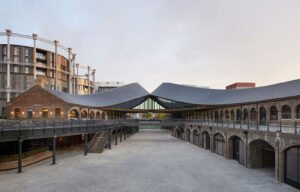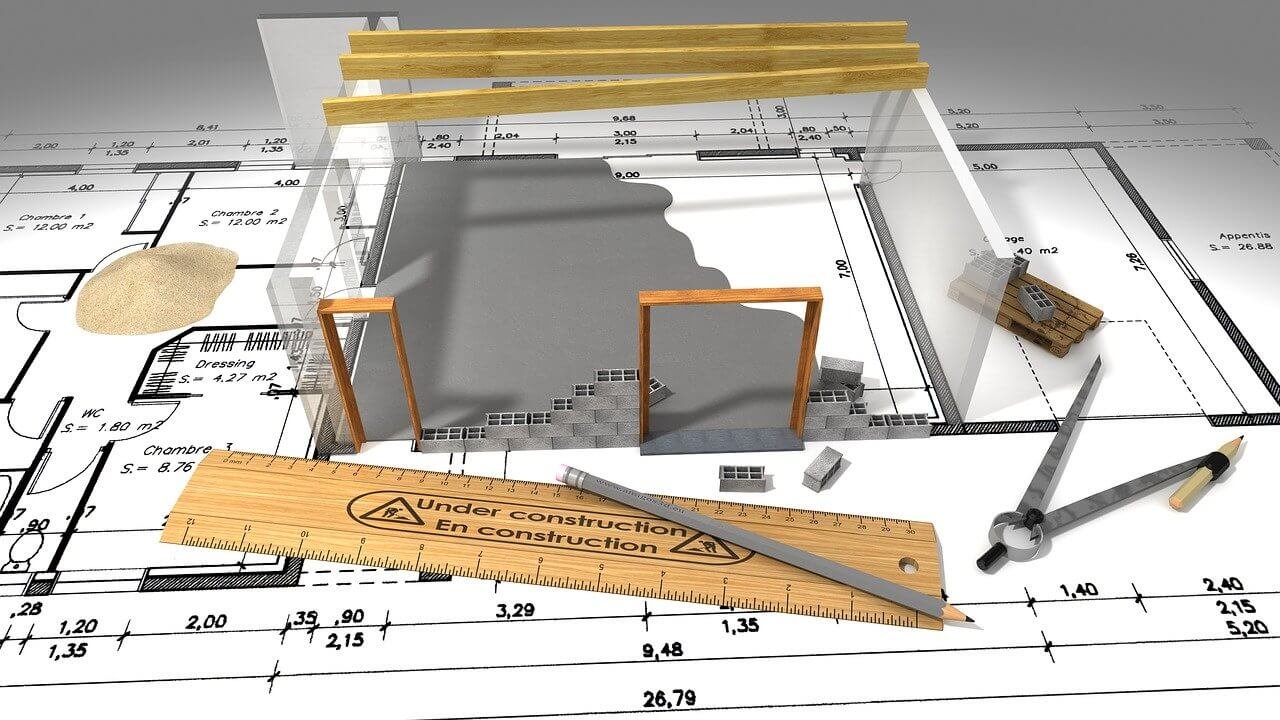By Definition:
A process of taking an old building or site, and reusing it for a purpose other than it was designed. It is closely related to historic preservation or conservation around cities with rich histories. Adaptive reuse, or adaptive re-use architecture, a process of repurposing buildings that have outlived original purposes for different uses or functions while at the same time.
An old factory might be transformed into a museum, a historic electric building can become apartments, an old warehouse transformed into a restaurant, a restaurant into an office. Sometimes called property rehabilitation, or historic redevelopment, the common element no matter what you call it how the building is used.
We are nearing 2030, opportunities to restore, rehabilitate, reuse, or reconstruct will play an essential role in our efforts to address the effects of climate change.

Adaptive Reuse Basics:
Adaptive reuse is a way to save a neglected building that might otherwise be demolished. The reusing practice benefits the environment by conserving natural resources and minimizing the need for new materials. The process also changes the aesthetics of ineffective items into new space definitions and for different purposes.
The Industrial Revolution of the 19th century and the great commercial boom of the 20th century that created opportunities for the industry. After generations later, the ideas of preservation is more ingrained in society and now reaches beyond commercial properties changing use.
A natural inclination of designers and developers is to create a functional space at a reasonable cost in a less time period. It is true that the cost of rehabilitation and restoration is more than demolition and building new. Then why think about adaptive reuse? Following are some reasons to which you will agree:
- Materials: Seasoned building materials are not available in today’s world. Close-grained, first growth lumbers were naturally grown and much stronger than today’s timbers. You cannot justify that vinyl siding have the quality and strength of old bricks.
- Sustainability: The process of adaptive reuse is inherently green. The construction materials’ needs for the building have been already produced and transported onto the site.
- Culture: Architecture is a source of history that needs to be preserved and passed on to future generations.
Why is Adaptive Reuse and Renovation Important?
The process of preserving the building’s history, identity, and culture is itself a form of art. Transforming and reusing buildings to them more efficient, sustainable, and renovating for future communities or generations to inhabit them is an adaptive idea. Considering what you already have, before adding on something new is an effective way to achieve perfection marking different eras and design ideologies.
As technology moves forwards and further, so does the architecture and construction industry, providing opportunities for infinite tools and resources to design and build cities. As promising the developments sound, the new construction is already consuming the world’s limited resources faster than we can replenish them.
Adaptive reuse defines progress differently, rather than creating a narrow vision that has possibilities with a blank slate, it reuses the creative thinking. The focus is more on what currently exists and how it can be incorporated thoughtfully into the goals and ideas of the future. Adaptive reuse can be implemented on any building- presently it is practiced in preserving and reusing historic buildings.
“Adaptive reuse is not just about saving buildings or preserving buildings, in fact, it’s about the fact that communities don’t use more materials than necessary.”
Some cities have already decided on to adopt a ‘newer the better’ mindset, causing them to discard a perfectly fine, usable resource in order to ‘upgrade’. This rather radical thinking has caused major issues for our environment and will continue to do so. While there are some cities, preserving the heritage of their city like facades, buildings, iconic towns for the generations to come. In fact, the idea itself is an example of how individuals can use creative ways and options for recycling, reusing, repurposing, replenishing, already existing resources.
Any adaptive reuse projects begin with a thorough examination of the structural building, other factors like time, cost and efficiency. No matter how appealing adaptive reuse is, sometimes saving money by reducing certain costs like building a new building, major tasks of harming the structural part are important.

Considerations while designing for Adaptive Reuse:
Take any design, there is always a key consideration which lies behind. The change of use requires certain paperwork to current building code requirements for safety and accessibility. There are complexities in predicting construction costs, particularly in some markets that lack experience for the renovation and restoration works. Determining the building’s conditions is a must, often it involves selective demolitions, hazardous material testing, and abatement. All of these factors play an important role in finding the correct adaptive reuse solution.
As one can imagine, the historic buildings give us a peek into our collective past with the vision of reusing a space or a structure for the future.
Some Adaptive Reuse considerations are listed below:
- Land: When the land is in an area hard to come by, adaptive reuse is a great option for increasing the footfall. Rather than contributing to urban sprawl, or moving in undesirable locations, needs you to allow how to conserve space. Keeping cities and lanes walkable and vibrant.
- Environment: An easy solution for many is building from scratch, the truth is, this type of thinking creates a negative impact on the environment. With respect to “REDUCE, RECYCLE, REUSE”, the first step is to reduce environmental footprints by the use of materials. Adaptive Reuse is a choice, for a building that has been already built and helps us to get out of the mindset of constantly developing leaving behind the structures.
- History: One of the major factors ruling adaptive reuse, conserving and preserving the history of a building. It not only allows us to preserve a part of history but also allows to take advantage of historic buildings, showcasing it to the future. In many cases, adaptive reuse is the only solution remaining when structures are already been preserved by organizations.
- Function: There is a need to reimagine the adaptive use to gain a great deal out of it. Buildings built for a certain prior use do not need to continue that use to be a success. Old chapels, historic structures can become inns, water towers can be converted to apartments, industrial buildings to residential towers and offices. Whatever function you give, it should cater to the people and be preserved. When the location and site is right, you mix it up with creativity.
- Reconciliation: When done right, adaptive reuse is the bridge that connects past to present and present to the future. The adaptive reuse projects can bring the most out of modern-day technologies and innovations.
Adaptive reuse isn’t always the best solution, but something serious that should be considered while demolishing a structure or building new buildings. Carrying out an adaptive reuse project is certainly a challenge but also a very rewarding task.
Above everything else, the major driving factor behind adaptive reuse is the ability to keep stories intact for the generations to come. This type of holistic approach ensures existing buildings and materials honor without sacrificing today’s needs and styles. Imagine, a smart way to conserve materials, protect the environment, preserve the past is nothing but adaptive reuse.
To know more about Architecture Technology, Stay Tuned.
Previous Coverage:
- A.I. & Robots Revolutionizing the Construction Industry
- Towards Regenerative Development
- Augmented Reality Transforming Cities
- Coastal cities at the highest risks?
- Co-Living, A buzzword of 21st Century!



